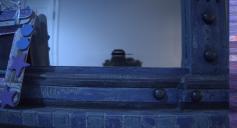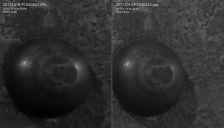
Please, support PV!
It allows to keep PV going, with more focus towards AI, but keeping be one of the few truly independent places.
It allows to keep PV going, with more focus towards AI, but keeping be one of the few truly independent places.
GH2 Digital Sharpening removable with hack?
-
After having shot a great number of pictures with both the kit 14-42 and my manual konica hexanon i feel for sure that the kit lens is ugly because of the digital sharpening that also makes the highlight roll off to be very digital, unpleasant and fuzzy. The most evident situation is in outdoors where you can see the trees to be sharpened and the sky are very acid, while with the konica is everything more pleasant (and the dr is the same...)
-
I love Pana lenses, I have the 7-14 and it's just awesome, really need to kill that sharpening ...
-
Oh I see! I can do a side by side comparison with my Panasonic kit lens then, should be more useful.
-
Thank you starstuff!
-
@proaudio4
>Thanks for the crops.
>I'm not sure how magnified those crops are, but I'm not seeing sharpening artifacts on them.
Not magnified, 100% crops. -
@stonebat - "I guess the body recognizes Lumix m43 lenses and applies some sort of sharpening."
I seriously doubt this is the case, as Panasonic would have spun it in promotional material as an exclusive advantage of Four Thirds system lenses. What seems more likely is that the Lumix lenses' clinical sharpness is due to their image-space telecentric design:
http://en.wikipedia.org/wiki/Telecentric_lens
Unlike film, which is flat and equally sensitive to light from all angles, the photo receptors in a CMOS image sensor are fabricated into cylindrical wells. As a result, oblique light rays may defract off the circular rims of the photo receptors and reduce the overall sharpness of the image. The design goal with a telecentric lens is to focus the light into rays that are parallel to the axis of the lens - and thus perpendicular to the image sensor - minimizing the defraction effect of oblique light rays.
Since legacy lenses were designed for film, they allow more oblique rays to strike the image sensor, particularly ultra-fast primes shot wide open. This produces an overall softening of the image which many of us prefer to the precise digital look of Lumix and Zuiko lenses. The drawback, however, is that legacy lenses are more susceptible to flare and reflections that bounce back into the lens off the image sensor itself. Panasonic's sensors are prone to blowing out highlights and uncontrolled lens flare can make this even worse.
While the digital image sharpening filter in the camera can make aliasing artifacts look worse, it cannot simply be "turned off". It is an integral part of the demosaic filter that converts the image sensor's Bayer RGBG array into RGB pixels:
http://en.wikipedia.org/wiki/Demosaicing
The reason a sharpening filter is necessary is because the RGB still-frame resolution of the camera is generated at the same high resolution as the photo receptor array. The native luminance resolution of the sensor is actually closer to the number of green photo receptors, which is only a quarter of the GH2's rated 16 megapixels. The mathematical interpolation used to calculate the RGB pixel values would produce overly-smoothed image details if sharpening were not used in the algorithm. While Panasonic has not disclosed the details of their proprietary demosaic algorithm, it no doubt uses edge detection techniques rather than straightforward unsharp masking.
OTOH, the GH2's Sharpness settings were optimized for high resolution JPEG still photography rather than HD video, and could probably be patched to lower values. However, this would not eliminate aliasing artifacts, it would only tone them down, along with genuine image details. The only way to reduce aliasing at the source is by lens and/or filter choice. Here again, the dilemma is the trade-off between excessive sharpness and susceptibility to lens flare. To my eyes, the modern aspherical lens designs used in contemporary Nikon, Samyang, Tokina, Sigma, and Tamron lenses produce more balanced results than either non-aspherical legacy primes or telecentric Lumix and Zuiko lenses. If they were more compatible with the GH2, I'd probably include modern Canon aspherical lenses as well.
-
@starstuff,@Elenion,@Ian_T,
My current theory is that it's not just Panny lenses, but any Micro4/3rds lens - the sharpening is probably applied during the distortion correction. If so that would explains why manual lenses look softer.
We can test the theory by shooting with a AF lens, both with and without the contacts covered. -
@LPowell Thanks. I buy into your theory. You saying the design of m43 lenses gives the extra sharpness where the body processes indifferently. The telecentric m43 lens design makes sense to explain the more light reflection from the m43 sensor back to the lens.
-
@LPowell, it's quite possible that some sharpening is used in the demoasic process, but it's far less than what we get with video. Look at RAWs in eg. SilkyPix with sharpening disabled - they're much softer than what's coming out of video. And that's what interlaced video looks like too: http://www.personal-view.com/talks/discussion/391/25p-official-topic-aka-dont-cry-for-me-argentina/p5
I think it's also likely that sharpening (or extra sharpening) is applied during lens distortion correction - any image distortion will soften it, so it makes sense for Panny to compensate (and keep it quiet).
Either way, it's pretty clear that sharpening can be dialed back much further than the film modes allow. Even just a few more notches (-5?) would be a massive improvement. -
@_gl - "Look at RAWs in eg. SilkyPix with sharpening disabled - they're much softer than what's coming out of video."
Agreed, but this ties into my point as well. RAW image processing apps like SilkyPix and Adobe Color Raw use their own internal demosaic algorithms to convert RAW RGBG data into RGB pixels. Similarly to the GH2, these apps provide controls that allow you to adjust the amount of image sharpening used in the demosaic algorithm. When you set sharpness to minimum with these apps, they will actually suppress genuine image details present in high-contrast edges. While this may well produce an image quality that you prefer, it is technically due to uncompensated low-pass filtering rather than turning an extraneous sharpening filter "off". -
@LPowell, you may be right, but that's not the issue here. The sharpening on the GH2 is way beyond de-mosaicing (unless the sharpness is actually a demosaic parameter, in which case it can be dialed back). Look at interlaced video output, much softer - sharpening (wherever it happens) is obviously disabled there, or dialed way back. So it can be done.
There's a good chance that Vitaliy can just find & remove the '-2' limit from the film modes and give us more options. -
@_gl
The GH2 image sensor is always scanned progressively, in interlaced video modes as well. The interlacing must be done in a later step that no doubt applies additional filtering to convert the frames into a 50i or 60i stream. It's hard for me to evaluate, as interlacing looks like crap to my eyes, regardless of whether it's soft or sharp.
I think we agree on the value of lowering the '-2' sharpening limit in the film modes. Perhaps -4, -3, -2, -1, 0 would be a good range instead of the stock -2, -1, 0, 1, 2. -
(for some reason I can't sign in via Firefox anymore, anyone know how to fix that?)
@LPowell,
> I think we agree on the value of lowering the '-2' sharpening limit in the film modes. Perhaps -4, -3, -2, -1, 0 would be a good range instead of the stock -2, -1, 0, 1, 2.
Yep I'd be very happy with that.
When I get time I'll run some proper tests on this, including the interlaced modes (with charts) and covering AF lens contacts. Unless someone beats me to it : ).
Has there been any news on the film mode hacking? If not I wonder if V @ cbrandin have already cracked it and want to suprise us with it on the next PTool release. -
I can very much confirm the extra sharpness on my Lumix lenses. Even with all sharpening off I do get edge sharpness artefacts. My Voigtlander gives the most pleasing image as it doesn't do this. I have the 7-14mm and have noticed it. You can see it if you pan across trees as a weird strobing and on contrasty edges like car details. It's a rather annoying thing to be honest. It can be slightly offset or softened by using my LCW Fader ND. This was notorious for softening but at least with the Panny lenses this is a bonus. I'd love a way to disable it. Of course my FD lenses produce nice results, none of this sharpening.
-
Do anyone knows the status of work of cbrandin for the film modes?
-
I'm just glad more people are starting to realize the connection. In addition I've also been attributing some (not all) of the extra noise we see in GH-2 images to the Panny lenses. But regardless the noise in the images is (mostly) pleasing.
-
>Do anyone knows the status of work of cbrandin for the film modes?
Work is going on.
Cris and I tried to change few curves found inside firmware.
Right now solution is not found. -
The sharpening effect is the main reason I kept my GH1. On some scenes I just hated the sharpening (grass, leaves) However, I did a lot of my initial testing with the Panasonic 20mm. Thanks for the tip about the effect being different with MF lenses. I will retest some of the videos with some sharp primes. However, if the sharpening could be one notch lower in software that would be a cool feature. I'll also retest some of my noise videos as per Ian's suggestion, but I haven't noticed a big difference in noise since I use my Nikkor primes indoors and still get more noise with the GH2. But I'll retest against the Panny lenses.
-
I certainly agree there's something going on when using panny lenses. I'm not sure if it's a function along with the distortion correction, but non panasonic lenses that do not work with the electronic correction look reasonable to me.
-
Further to Iresolution. I went back to the camera and realised it was on standard. I switched it off entirely, which is a pain in movie mode as it's greyed out and you have to access it in a stills picture mode. I switched it to OFF, Standard, and High and can totally see the difference between Off and the other modes. Not so much between Standard and High. The difference is enough for me to switch it off entirely in movie mode though. So thanks for the tip guys. Only major problem is very thin lines still are resolved in a wavy way which I had back in the GH1 days. This ultrafine detail is a moire artefact and I think the only way to deaden it is by using filters etc like promist.
-
GH2VK, Lumix 14mm 2.5, Standard film mode 0,-2, 0, -2. 16:9 aspect ratio. I took a photo with both JPEG and RAW enabled.
1st photo: JPEG straight out of GH2. This one has in-camera distortion correction.
2nd photo: RAW -> Picasa 3.8 -> Export to JPEG without any other modification. It looks wider and shows the distortion. I guess the "0" contrast and "0" saturation settings of the film mode didn't apply to the RAW.
3rd photo: Set both at black and white and did comparison. This is top right corner of the photos. 1st photo on the left.
The in-camera JPEG has less detail and less noise. I wouldn't worry about the -2 sharpness setting. But the -2 noise reduction doesn't seem like doing a good job. Or maybe that's just in-camera JPEG lossy conversion's limitation. But I wouldn't worry about it because @driftwood's high bitrate settings produce more fine noise.
The theory that the camera body applies more sharpness after distortion correction didn't seem right. I'm inclined to @LPowell's theory that images from Panasonic m43 lenses look sharper because of the design of m43 lenses.
 20111015-P1040323.JPG4976 x 2800 - 8M
20111015-P1040323.JPG4976 x 2800 - 8M
 20111015-P1040325.jpg5208 x 2816 - 2M
20111015-P1040325.jpg5208 x 2816 - 2M
 Screen shot 2011-10-15 at 6.46.19 PM.png1638 x 938 - 392K
Screen shot 2011-10-15 at 6.46.19 PM.png1638 x 938 - 392K -
@stonebat @LPowell Definative way to prove this is to take a picture with a M43 lens, then remove it (whilst the camera is still on to preserve the focus), tape over the contacts and replace it, fooling the camera into thinking it is a legacy lens. I tried it a while ago and remember the distortion correction was very noticable.
-
@stonebat
Also it seems that Picasa cannot read GH2 rw2 correctly (hence the weird color and bars on the right side).
But yeah, lots of correction happening. -
I recently conducted a series of color comparison shots between the GH2, GH1, and Nikon D5100. Using the GH2 as the standard, I settled on the following Film Mode for both GH2 and GH1, with the right amount of sharpening for my tastes:
Smooth
Contrast -2
Sharpness -2
Saturation -1
Noise Reduce -2
To match the GH1 to the GH2, I adjusted GH1 White Balance to -R5. Further details here:
http://www.personal-view.com./talks/discussion/1195/nikon-d5100-compared-to-panasonic-gh2
Start New Topic


Howdy, Stranger!
It looks like you're new here. If you want to get involved, click one of these buttons!
Categories
- Topics List23,993
- Blog5,725
- General and News1,354
- Hacks and Patches1,153
- ↳ Top Settings33
- ↳ Beginners256
- ↳ Archives402
- ↳ Hacks News and Development56
- Cameras2,368
- ↳ Panasonic995
- ↳ Canon118
- ↳ Sony156
- ↳ Nikon96
- ↳ Pentax and Samsung70
- ↳ Olympus and Fujifilm102
- ↳ Compacts and Camcorders300
- ↳ Smartphones for video97
- ↳ Pro Video Cameras191
- ↳ BlackMagic and other raw cameras116
- Skill1,960
- ↳ Business and distribution66
- ↳ Preparation, scripts and legal38
- ↳ Art149
- ↳ Import, Convert, Exporting291
- ↳ Editors191
- ↳ Effects and stunts115
- ↳ Color grading197
- ↳ Sound and Music280
- ↳ Lighting96
- ↳ Software and storage tips266
- Gear5,420
- ↳ Filters, Adapters, Matte boxes344
- ↳ Lenses1,582
- ↳ Follow focus and gears93
- ↳ Sound499
- ↳ Lighting gear314
- ↳ Camera movement230
- ↳ Gimbals and copters302
- ↳ Rigs and related stuff273
- ↳ Power solutions83
- ↳ Monitors and viewfinders340
- ↳ Tripods and fluid heads139
- ↳ Storage286
- ↳ Computers and studio gear560
- ↳ VR and 3D248
- Showcase1,859
- Marketplace2,834
- Offtopic1,320
Tags in Topic
- hack 405
- sharp 7
- sharpening 2
- aliasing 2











